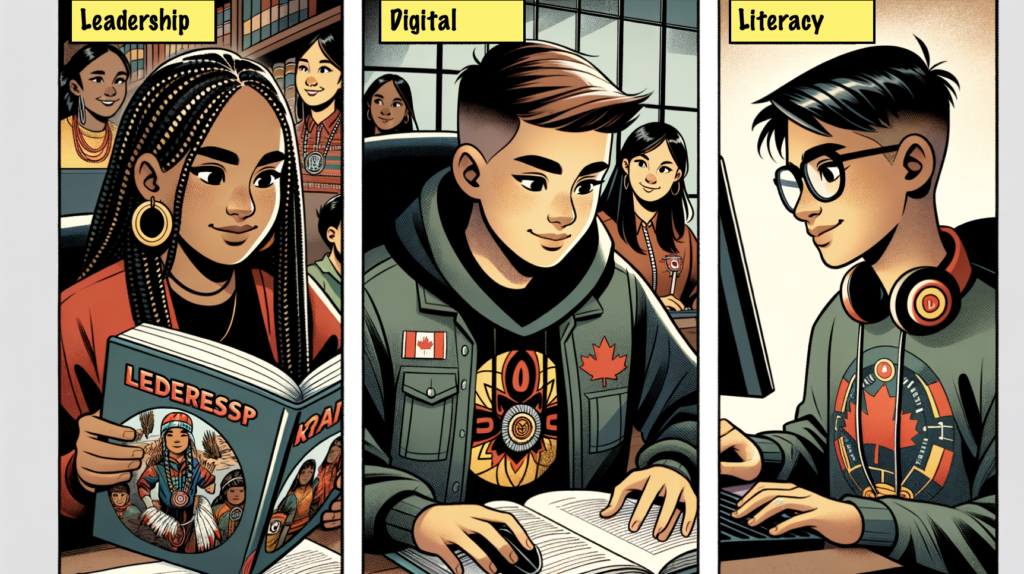Last week, we started to learn about Intellectual Property and Indigenous Cultural Expressions (ICEs). We also touched on why ICEs need special protection because they can often be deeply connected to a community’s history and spirituality. Without proper protection, these unique cultural elements can be misused or exploited, leading to a loss of cultural heritage. Respecting and protecting ICEs ensures that First Nations, Inuit and Red River Metis communities can maintain control over their cultural legacies and can benefit from their traditional knowledge and expressions.
Each week, we’re planning to look deeper into some of these important topics and learn more about what Indigenous Cultural Expressions are, and why they need more of our attention.

So, what are Indigenous Cultural Expressions?
Indigenous Cultural Expressions include a wide range of cultural products and practices that are integral to the identity of Indigenous communities, and not just those in Canada! These can be songs, dances, stories, symbols, designs, and even medical knowledge passed down through generations. Each of these elements holds significant meaning and value, often linked with a community’s spiritual beliefs, historical experiences, and social practices.
One of the main reasons for protecting ICEs is to prevent their misuse and exploitation. When valuable cultural expressions are used without permission, it can lead to “cultural appropriation.” This is when elements of one culture are taken and used by another without understanding or respecting the original context. Cultural appropriation can be harmful because it often strips away the true meaning and significance of the cultural elements and can even lead to the commercialization of sacred traditions.
For many Indigenous communities, their cultural expressions are not only a source of pride but also an essential component of their survival and continuity. In learning to maintain control over their ICEs, communities can better ensure that their traditions are passed down accurately to future generations, preserving their heritage and identity.
Here in North America, ICEs also allows Red River Metis, First Nations and Inuit communities to benefit economically from their cultural knowledge. With proper protection mechanisms in place, they can enter into fair agreements if they choose to share their cultural elements. For example, they can partner with businesses or other organizations in a way that respects their traditions and provides financial benefits back to the community.
Safeguarding ICEs are critical to reconciliation as a process.
Recognizing and valuing the rich cultural contributions of Indigenous communities fosters respect and understanding. It acknowledges the injustices that have occurred and helps build a more inclusive and equitable society for everyone. In Canada, and indeed globally, there’s growing awareness and efforts to protect Indigenous Cultural Expressions. Legal frameworks and policies are being developed to offer better protection and recognition. However, there’s still much work to be done to ensure that these protections are effective and truly benefit Indigenous communities.
Let’s remember, Indigenous Cultural Expressions are invaluable treasures that carry the essence of First Nations, Inuit and Red River Metis history, spirituality, and traditions. Properly protecting these expressions is essential to prevent misuse, preserve cultural heritage, and enable Indigenous communities to benefit from these cultural knowledges.
About our summer programming
Our program activities this summer are supported by a grant from the Indigenous Intellectual Property Program (IIPP) with Innovation, Science and Economic Development Canada. The program is designed to support increased engagement in the IP system by Indigenous peoples in Canada. The grant funds eligible Indigenous organizations to support participation in World Intellectual Property Organization (WIPO) sessions, small-scale initiatives and projects related to intellectual property (IP), Indigenous Knowledge (IK) and Indigenous Cultural Expressions (ICEs). This summer’s Niriqatiginnga Youth, Arts and Media Team activities are also supported by Manitoba Agriculture and the Sustainable Canadian Agricultural Partnership, the OpenAI Researcher Access Program, Agri-Food and Agriculture Canada and the Government of Canada’s Youth Employment Skills Program. Our Mission is to #UniteKindness.










